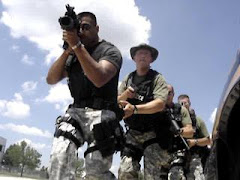 |
| "Nana korobi ya oki" (Fall seven times, rise eight). |
In the nearly three decades that I have been a student
of the Warrior’s Path, I have had the opportunity to explore various
disciplines of Warrior training: as a combat veteran of the United States Army, as a member of law
enforcement’s elite special operations teams, and –at a core level – as a life
time martial arts student, practitioner, and teacher.
Warrior training has many tangible and obvious value
adding benefits that relate to self-defense, physical health/fitness, mental
acuity, etc. However, these are what
may be described as the “surface level” benefits of the discipline. While the training must be focused on these obvious aspects, much of the deeper value is hidden from the uninitiated eye.
The reality is that most student's of Warrior training, even most soldiers, will
never actually see "combat". Most law
enforcement special operations team members will never be in direct action
operations. And most martial arts
practitioners will never have to call upon their skills to defend
themselves. As a real-world illustration
of this point, our dojo, the Midwest Academy, is located in the greater metropolitan area of
Chicago, Illinois. 2012 FBI Crime
statistics show that the city alone logged 12,272 aggravated assaults (instances of people trying to kill someone) and 500
homicides (instances where people succeeded in killing someone). Despite these staggering
statistics which earned Chicago the moniker of “murder capital of the nation”, when
expressed as a percentage of the total population of the Chicago area, the
homicide rate is about 7.1%. That reinforces the idea that the significant
majority of the population, over 90%, will never be directly affected by violence. Since most people intuitively know that to be true, the obvious question becomes why one would expend the time and effort required of Warrior training.
Are there significant tangible value adding benefits that an individual develops through Warrior training other than personal protection? I certainly believe so. In fact, the privilege of assisting others in
developing these less obvious benefits of Warrior training was a critical
influencing factor leading to the inception of the Academy.
This article briefly touches on what, I
believe, are two of the most valuable personal attributes that Warrior training develops in those who integrate the training into their lives. Those attributes can be described collectively
as emotional resilience and mental toughness.
Inferences to the tenacity developed by fostering
emotional resilience and mental toughness can be traced to Judeo-Christian
writings in the Old Testament of the Bible which states, “For the just man
falleth seven times, and rises again” (Proverbs 24:16, King James Bible); to
the teachings of Bodhidharma, founder of Buddhism, who taught followers to, “Fall
seven times, rise eight times” (Bodhidharma); and are even described in the modern
warrior ethos of our US Special Operations Forces when they commit that, “If
knocked down, I will get back up, every time” (Navy SEAL ethos). The point here is that we, as humans, learned a long time ago that emotional resilience and mental toughness were high value attributes to have/develop; and we know that they still are today.
While the Warrior’s Path requires us to be committed to
the development of solutions to life and death problems, the “test” for most on the Path does not appear on the battlefield, but rather presents itself through
the various challenges and hardships of life – the loss of one’s health, the loss of one's job, the
illness of a loved one, the constraints of time, money, energy and the effects on
one’s goals and life direction are but a few examples. Less emotionally resilient individuals, quite often, fall
into cycles of anger, hopelessness, and despair when facing these challenges. Many individuals lose momentum and give up hope for a better future, dreams of success, and direction for a better
life; instead they live a quality of life that is in proportion with their commitment
to “getting back up”. While getting knocked
down is less than enjoyable, "staying down" is commensurate with living in fear, with failure as a companion, and drowning in a sense of defeat. Staying down does
not require courage or faith; getting back up requires both. In short, while staying down is unpleasant, for the individual who has not developed emotional resilience and mental toughness, it is easier than getting back up and getting back to the challenge with a "can-do" attitude!
Emotional resilience and mental toughness, developed through Warrior training, allow an individual to “embrace the suck”; to get up, to lean back into the challenge
with either a more refined strategy for success, or with the sheer force of
determination to push through, or – more often – a combination of both. The attributes of emotional resilience and
mental toughness are not intellectual. They are visceral. They are a glint in the eye, a feeling in the gut. An individual cannot “pump up their psyche” in an sustainable way. Emotional resilience and mental toughness are attributes
that are similar to strength, flexibility, or endurance – qualities built slowly and purposely over the
course of time. Good Warrior training programs
have a level of emotional and mental challenge designed to push the
practitioner outside of his/her comfort zone; to challenge them to
push through discouragement, fatigue, boredom, etc. The deliberate adversity designed into Warrior training is the “work load” though which the “muscles” of emotional resilience
and mental toughness are developed. It is the
grounds upon which the trainee/student learns to exercise their courage and faith - the prerequisites for forging emotional resilience and mental toughness.
The actual formula for developing these attributes is
quite simple. Get started (in a high
quality program). Lean into the
challenge. Embrace the suck. If/when knocked down, get back up, every time. And take quitting off the table of options.




